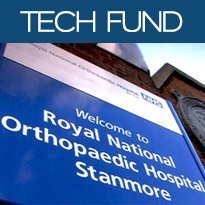Best of breed EPR for Royal Orthopaedic
- 21 July 2014

The Royal National Orthopaedic Hospital NHS Trust is developing a best of breed electronic patient record system with the help of money from NHS England’s technology fund.
The trust received £3.3m from the ‘Safer Hospitals, Safer Wards Technology Fund’ for its work on an EPR and information sharing portal.
The funding will be specifically used for e-prescribing, electronic document management with scanning of cases notes, and a clinical portal to integrate all systems into a single patient view, with the potential to be used in future to communicate with patients and care providers.
The trust’s director of IM&T, Saroj Patel, told EHI the trust has been planning to develop a full EPR for some time, and was about to start an implementation process as part of the NHS Connecting for Health programme before it was cancelled.
“We always had an ambition to implement a full EPR, because we know it delivers significant clinical benefits.”
Patel said the trust had already started work on the EPR before receiving the tech fund money, focussing on best of breed solutions rather than a “big bang” EPR.
However, the funding has allowed it to speed up the implementation process from up to seven years to three years.
“What this allows us to do is accelerate that [work] and deliver it much much faster…we can get quite a long way to delivering the benefits.”
Patel said the trust completed the procurement process for the EDM component 18 months ago, choosing the Evolve electronic document management system from Kainos, and is now moving into the implementation phase.
It had also completed the procurement phase for the clinical portal, before deciding to go back out into the market after receiving the tech fund money to “get a better look” at the available options and ensure it had the best value for money.
Patel said the trust hopes to complete the procurement process for the portal, as well as the e-prescribing component, in about two to three months’ time so it can move into implementation.
“My philosophy for implementation is that we have to do a quick, sharp implementation, otherwise it can go on forever. Once we’ve done the project cycle, we’ll have a short pilot to make sure everything’s working, then we’ll roll it out.”
Patel said the remaining gaps for the EPR are in nursing, with real-time bed screens, electronic nursing notes, nursing handover and vital signs monitoring systems still needed.
She said the trust will be making a bid for the second round of the Nursing Technology Fund, after it unsuccessfully applied for the first round last year.
Patel said the trust has had good clinical engagement with its work on the EPR, and is aiming to be “as paper-light as possible” with the new EPR.
“We’re really excited – this gives us a great opportunity to accelerate to being a paper-light, modern organisation.”




